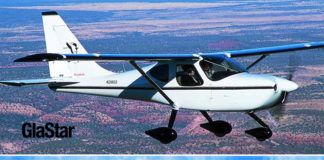Waiex Review Rebuttal
We are writing to express our disappointment in the Waiex. Y Not? flight review article that appeared in the July 2007 KITPLANES. In our opinion, the author has completely missed the mission of our family of aircraft . The author, Ed Wischmeyer, appears to have had a preconceived notion that there was something in the handling that he was not going to like and he went out of his way to fi nd it.
Not only had Ed Wischmeyer just jumped out of a Cessna, but his flight review was conducted in an airplane that had never flown with a passenger before and with a trim system that had not yet been tuned for a passenger configuration. We feel this approach was ill-advised and inappropriate in order to obtain an honest evaluation of the handling characteristics of the Waiex design.
While it is one authors opinion to characterize even some of the Waiex handling qualities as outside the accepted range it is an opinion that is not only misleading, its just plain false. To make a statement like this insinuates that somehow the aircraft is not fit for any pilot to fly and should be grounded immediately. It serves as a warning to current and would-be Sonex or Waiex customers that they should look elsewhere for their Sport Pilot aircraft .
With thousands of fleet hours on the Sonex family of aircraft worldwide, we need only to refer KITPLANES readers to the growing hundreds of positive flight reviews and comments made about our line of aircraft to justify a retraction to this very misleading statement. Many of these flight reviews from low-time pilots can be found by joining the factory-supported Sonex online discussion groups through the links on our factory web site. The Sonex, Waiex and Xenos are by design sportier than any of the certifi ed aircraft fl eet. They provide an immediate high fun-factor without compromising a thoroughly controllable and positive feel for the pilot.
We feel all of the Sonex aircraft make excellent transition trainers for those entering the sport aircraft market, especially when the Sport Trainer cockpit modifi cations are installed. Sonex Aircraft, LLC has never and will never suggest that any of our family of aircraft should be considered as IFR platforms. If our team of designers were to take on an IFR platform aircraft, it would look very different and fly very differently than our current product line…an IFR platform aircraft would not be nearly as much fun to fly! Sonex Aircraft, LLC has received numerous letters from builders and pilots objecting to this article, all of which have been submitted to KITPLANES. For any of the KITPLANES audience interested in learning more, we encourage them to read our full and unedited Letter to the Editor on our factory web site: www.sonexaircraft .com.
JEREMY MONNETT, CEO, SONEX AIRCRAFT, LLC
We never insinuated the Waiex was unfit or should be grounded, but simply reported the handling qualities as observed. In pursuit of fairness to both our Technical Editor and Sonex, I sought to fly a Waiex myself. Because the manufacturers assertions and our writers observations were in such opposition, it would be impossible to respond without more information. Two completed customer Waiexes were within 250 miles of my base in Southern California. One was still in Phase I flight test but the other, built by Gerhard Schapp, was into Phase II with 58 hours total time. I spent a Saturday morning with Schapp and his CFI Ron Caraway at his home airport in Apple Valley, California.
With one exception, the results of that flight validated the observations expressed in the review. I estimated the stick force gradient as 2 pounds per G in a steep turn-heavier than in the tested airplane but still quite light. Lets put this in better perspective than we did in the July issue, when we compared the Waiexs stick-force gradient to a fighters. According to the CAFE Foundations Aircraft Performance Reports, a Vans RV-6A posts a stick force per G of around 3 pounds at aft c.g. and around 4 pounds at mid c.g. An RV-8A at forward c.g. is 5 lb/G from 1 to 2 G, and an RV-9A is twice that. Schapps airplane carried full fuel (in a tank on the passenger side of the firewall) and no baggage.
I performed a standard phugoid test in which the airplane is trimmed for level flight then displaced, first nose up and then nose down. Most aircraft will correct quickly after the pitch change and eventually return to the trimmed airspeed. In fact, every Experimental Ive flown (within its approved c.g. range) does so, though sometimes not aggressively. Schapps Waiex would begin a very slow recovery from a pitch up but not from a pitch down. This behavior was different from the previously tested Waiexs because, we believe, the first airplanes trim system had not been set up for dual flight.
Sonex Aircraft and builders (from whom we received four missives directly) apparently believe we suggested that the Waiex could be considered for IFR use. What we said was that builders considering flying the Waiex IFR should think long and hard…. We often get questions regarding the legality and suitability of equipping aircraft in the Waiexs class for IFR flight. We agree with Sonex Aircraft that the Waiex is not meant for IFR.
Aircraft design is a compromise. Sonex has, by admission, chosen the path of responsiveness, not an unlaudable goal. But there is no free lunch: Its difficult to make a highly responsive aircraft stable as well-some pilots will like this kind of handling but others, we believe, might not. Its our job to describe these qualities so you can make your own decisions.-Ed.



